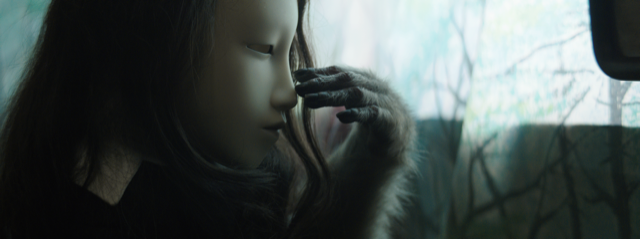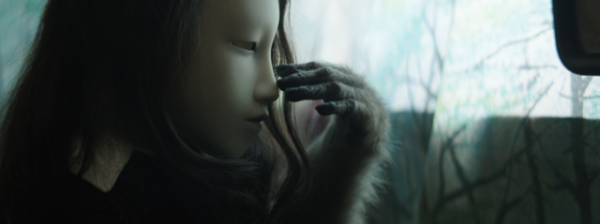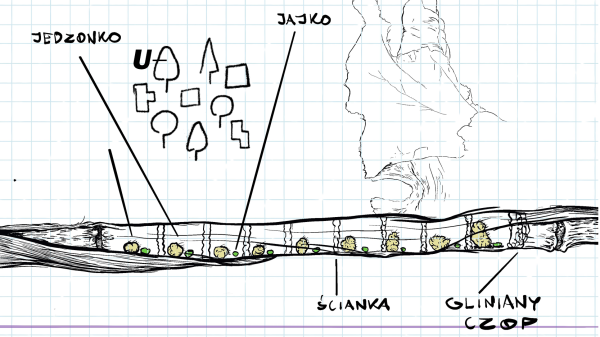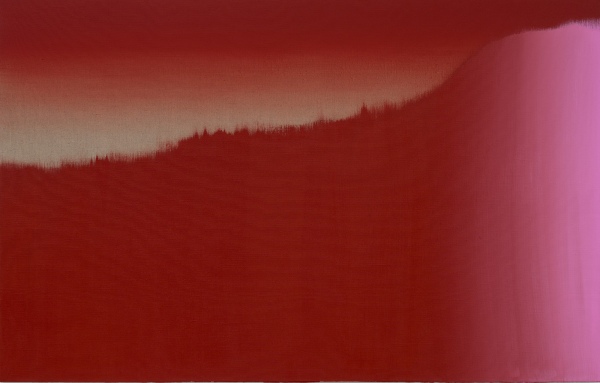screening
Posthuman Cinema set 1: Human Masks
Studies on the Ecology of Drama
Untitled (Human Mask)
It Seems that an Animal Is in the World as Water in the Water
Primate Cinema: Apes as Family
-
Studies on the Ecology of Drama
- directed by Eija-Liisa Ahtila, Finland 2017, 26'
- language: Finnish, subtitles: English and Polish
- This film by the Finnish artist can successfully replace reading texts and film science books of animal studies. It is an illustrated lecture, or rather workshop exercises from the basics of film grammar, showing how transparent and obvious elements of film language work in favor of the anthropocentric character of the medium.
- Courtesy of the artist; Marian Goodman Gallery, New York; Crystal Eye, Helsinki © Eija-Liisa Ahtila.
-
Untitled (Human Mask)
- directed by Pierre Huyghe, France 2014, 19'
- no dialogues
- Pierre Huyghe blurs the boundaries between the human and non-human. The work starts with footage of the contaminated area at Fukushima, and after a while moves on to a closed restaurant with a monkey in a waiter's outfit and a human mask. This is Fuku-chan, a macaque who actually works in one of Tokyo's restaurants. For 20 minutes we see our heroine moving around an abandoned room and seeming incredibly human. The apocalyptic context (Fukushima) allows us to think that we are dealing with a posthuman.
- Courtesy of the artist; Marian Goodman Gallery, New York; Hauser & Wirth, London; Esther Schipper, Berlin; and Anna Lena Films, Paris. © Pierre Huyghe
-
It Seems that an Animal Is in the World as Water in the Water
- directed by Bojan Šarčević, Germany 1999, 8'
- no dialogues
- The artist films stray dogs in a Danish church. The animals, however, do not change the character of this space; they perfectly fit into it.
-
Courtesy of the artist © Bojan Šarčević
-
-
Primate Cinema: Apes as Family
- directed by Rachel Mayeri, USA/Scotland 2012, 11'
- language: English, subtitles: Polish
- The main goal of Rachel Mayeri was to create a film for chimpanzees, taking into account their needs and perceptual preferences. Mayeri observed that almost all chimpanzees in captivity like to watch television. The artist asked Dr. Sarah-Jane Vick to work with her, and together they studied the film preferences of primates. The results were not surprising. It turned out that theirs were not very different from those of humans. They wanted to watch sex, violence, food, and things associated with power relations and social hierarchy. It also turned out that chimpanzees liked to watch pseudo-chimpanzees – people dressed as monkeys, who at the end of the day take off their masks. Of course, an interest in seeing somebody that looks almost like us, but is not us, is another preference that primates share with people.
-
Cover photo: Courtesy of the artist; Marian Goodman Gallery, New York; Hauser & Wirth, London; Esther Schipper, Berlin; and Anna Lena Films, Paris. © Pierre Huyghe




